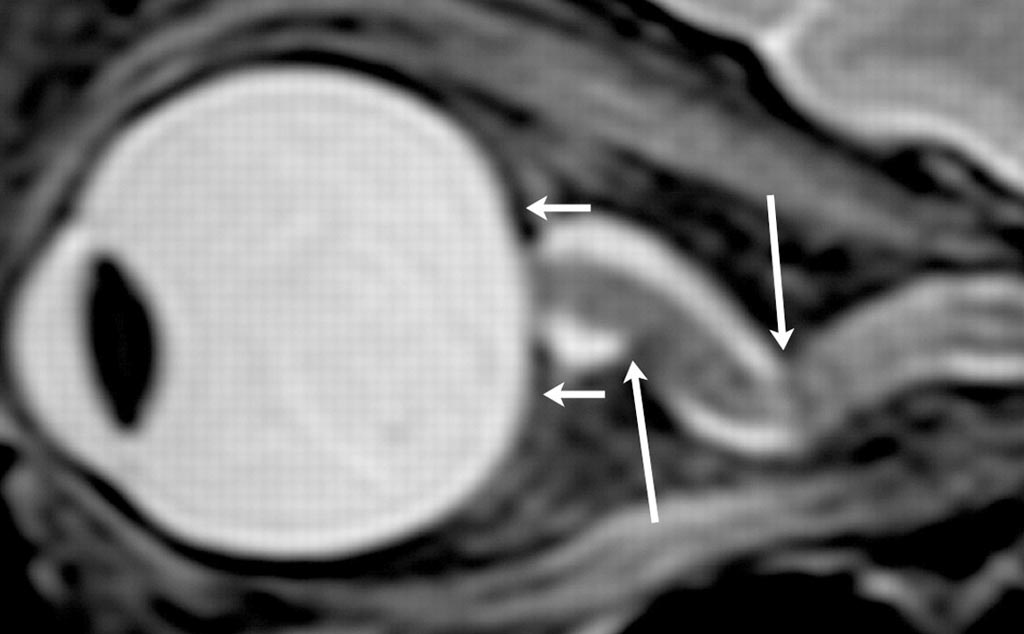Cause of Blurry Vision on Long Space Missions Found
By MedImaging International staff writers
Posted on 17 Jan 2017
Scientists studying the cause of visual impairments suffered by astronauts during long space missions have discovered that the problem is related to changes in the volume of Cerebro-Spinal Fluid (CSF), flattening of the eyeballs, and increased protrusion of the optic nerves.Posted on 17 Jan 2017
The researchers carried out high-resolution Magnetic Resonance Imaging (MRI) scans of the eye orbits and the brains of seven astronauts before and shortly after long-duration missions on the International Space Station (ISS). The researchers compared the results with those of astronauts from nine short-duration missions in space. The MRI results were analyzed using advanced quantitative imaging algorithms.

Image: An abruptly angulated foci in the optic nerve sheath, as well as globe flattening at the back of the eyeball, from a 2012 study of astronauts (Photo courtesy of RSNA).
Flight surgeons and scientists at the US National Aeronautics and Space Administration (NASA) had already observed for ten years that nearly two-thirds of astronauts on long ISS missions suffered from Visual Impairment Intracranial Pressure (VIIP).
The results showed significantly increased post-flight flattening of the eyeballs and increased CSF volume in astronauts on long-duration flights compared to those on short-duration flights. Brain grey or white matter volume was not significantly different between the groups.
Lead author of the study, Noam Alperin, PhD, University of Miami Miller School of Medicine, said, "People initially didn't know what to make of it, and by 2010 there was growing concern as it became apparent that some of the astronauts had severe structural changes that were not fully reversible upon return to earth. On earth, the CSF system is built to accommodate these pressure changes, but in space the system is confused by the lack of the posture-related pressure changes. If the ocular structural deformations are not identified early, astronauts could suffer irreversible damage. As the eye globe becomes more flattened, the astronauts become hyperopic, or far-sighted."














